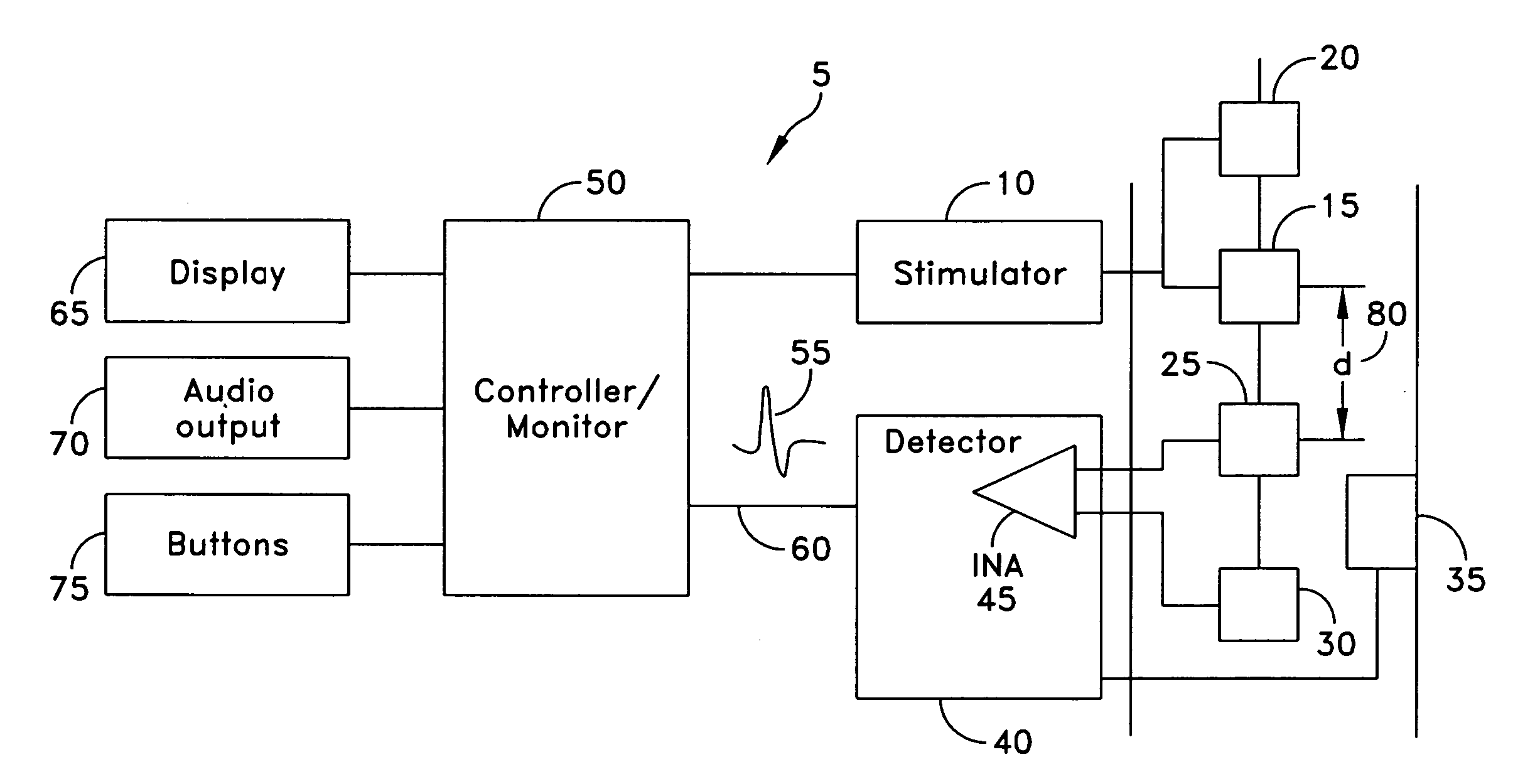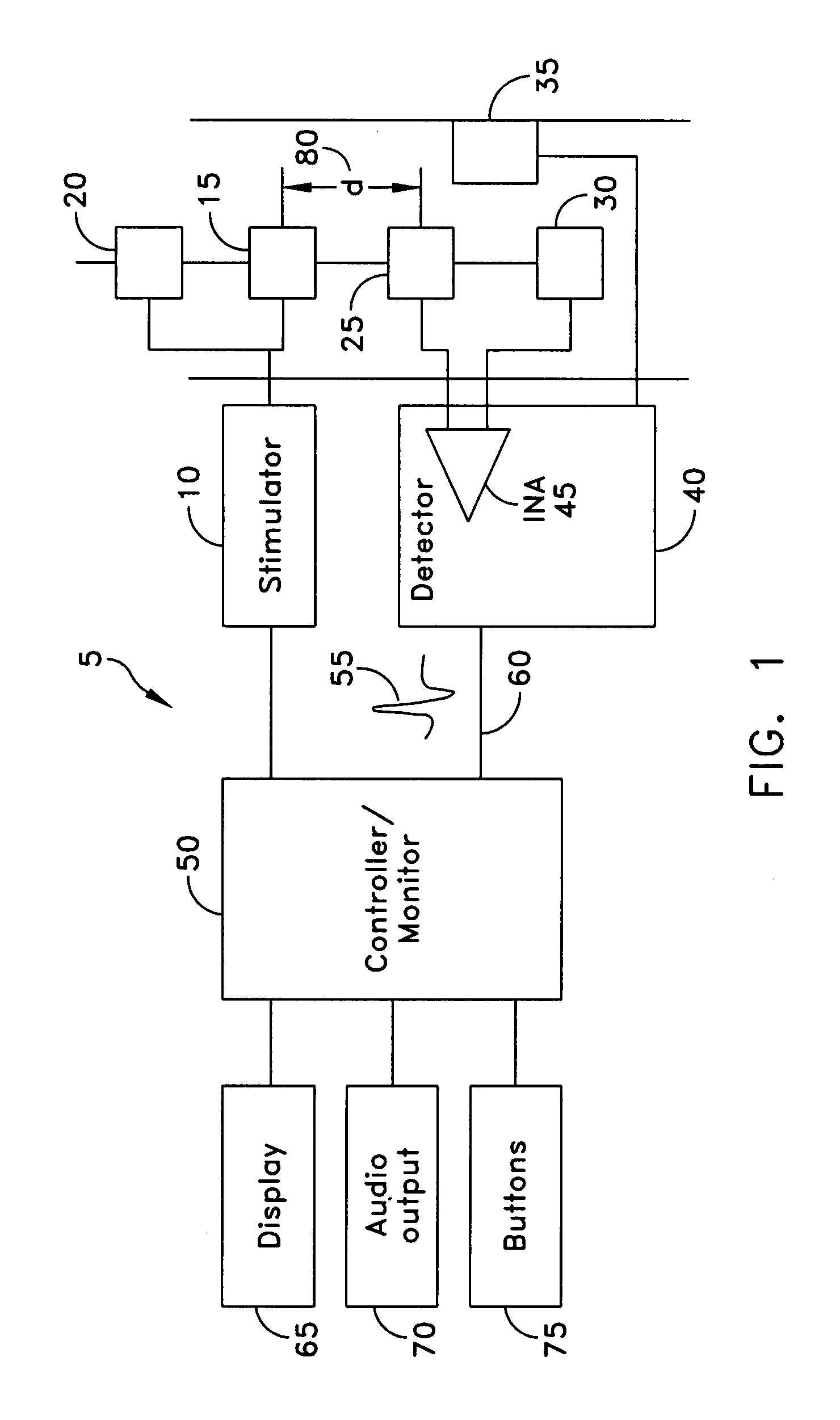Non-invasive acquisition of large nerve action potentials (NAPs) with closely spaced surface electrodes and reduced stimulus artifacts
a nerve action potential and naps technology, applied in the field of naps, can solve the problems of affecting the usefulness of the detected signal, and the system is susceptible to stimulus artifacts, so as to achieve the effect of effectively minimizing or substantially eliminating stimulus artifacts
- Summary
- Abstract
- Description
- Claims
- Application Information
AI Technical Summary
Benefits of technology
Problems solved by technology
Method used
Image
Examples
Embodiment Construction
Reducing Stimulus Artifacts by Shorting the Stimulator's Anode and Cathode
[0079] Looking first at FIG. 1, there is shown a device 5 which comprises a preferred embodiment of the present invention. More particularly, device 5 comprises apparatus for, non-invasively detecting large nerve action potentials (NAPs) while effectively minimizing or substantially eliminating stimulus artifacts, even where the stimulation site and the detection site are in close physical proximity to one another, e.g., within about 2 cm of one another.
[0080] NAP acquisition device 5 comprises a constant current stimulator circuit (also known as the stimulator) 10 that delivers an electrical stimulus to the stimulating electrodes 15 and 20 so as to stimulate a nerve of a patient. The evoked nerve action potential (NAP) is detected by a pair of surface electrodes 25 and 30, preferably in conjunction with a reference surface electrode 35. Electrodes 25 and 30 (and preferably also 35) are connected to a detect...
PUM
 Login to View More
Login to View More Abstract
Description
Claims
Application Information
 Login to View More
Login to View More - R&D
- Intellectual Property
- Life Sciences
- Materials
- Tech Scout
- Unparalleled Data Quality
- Higher Quality Content
- 60% Fewer Hallucinations
Browse by: Latest US Patents, China's latest patents, Technical Efficacy Thesaurus, Application Domain, Technology Topic, Popular Technical Reports.
© 2025 PatSnap. All rights reserved.Legal|Privacy policy|Modern Slavery Act Transparency Statement|Sitemap|About US| Contact US: help@patsnap.com



